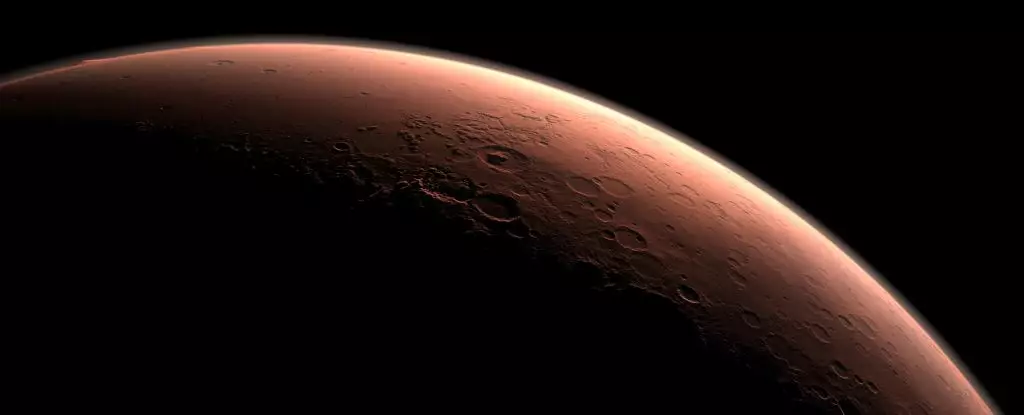The relentless quest for Martian life has captivated scientists and the public alike for decades. Since the 1970s, we have deployed numerous missions aimed at understanding the red planet’s environment and its potential for harboring life. Despite substantial advances in technology and scientific understanding, a definitive claim confirming extraterrestrial life remains elusive. This sustained interest is largely fueled by discoveries and theories that suggest the conditions on Mars may once have been favorable for life, as well as by the paradoxical findings of past missions that have led scientists to reconsider how they approach the quest for life on the planet.
The Viking missions in 1976 marked a pivotal point in the exploration of Mars, being the first to land safely and conduct scientific investigations on its surface. Equipped with an array of experiments designed to detect biosignatures, these missions laid the groundwork for our understanding of the Martian soil. However, their results have become a source of significant debate among astrobiologists. Among the many intriguing outcomes was the discovery of chlorinated organic compounds by the gas chromatography-mass spectrometry (GCMS) experiment, which was initially dismissed as contamination from Earth-based materials. Recent interpretations suggest that these compounds may, in fact, be Martian in origin, raising fundamental questions about their genesis—whether they stem from biological or purely geological processes.
Further complicating the narrative are suggestions that key experiments conducted by Viking might have inadvertently destroyed signs of microbial life they sought to identify. Researcher Dirk Schulze-Makuch asserts that the methods utilized potentially obliterated evidence rather than illuminating it. This insight offers a sobering reminder: the very tools designed to uncover the mysteries of Mars could have played an inadvertent role in obscuring them.
The Viking missions featured experiments such as the labeled release and pyrolytic release tests, which aimed to gauge metabolic activity and signs of photosynthesis in Martian soil samples. However, Schulze-Makuch suggests that these experiments might not have taken into account the extremophile nature of possible Martian life forms. The intuition at the time was that Martian microorganisms would exhibit similar traits to their Earth-bound counterparts—thriving in wet conditions with an abundance of water. Yet, recent discoveries assert that life can adapt astonishingly well to arid environments, which raises critical questions about the experimental designs deployed during the Viking missions.
Schulze-Makuch’s metaphor of hyperhydration aptly illustrates this point: introducing water to an organism adapted to dry conditions could be likened to drowning. This raises a fascinating prospect; could the results obtained during Viking’s experiments indicate the presence of life forms that were inadvertently destroyed by the methodologies employed?
Interestingly, the results of the pyrolytic release experiment indicated stronger signs of organic activity when no water was involved. This disparity suggests that, had the experiments designed to probe microbial life been tailored to accommodate the dry-adapted organisms, we might have observed entirely different outcomes. The implications are profound—could we have missed previously undetected signals due to our preconceived notions about what Martian life should resemble?
These observations have prompted calls for a reevaluation of how we approach the next generations of Martian missions. Schulze-Makuch advocates for a dedicated pursuit of life detection, one that emphasizes the need for ecological understanding of Martian environments. Speculative hypotheses, such as the potential for life forms operating on hydrogen peroxide rather than water, underline the necessity for flexibility in our exploratory methodologies.
Future missions to Mars must take into account the lessons learned from Viking. A paradigm shift is essential; the next set of experiments should be constructed with the explicit understanding that Martian life, if it exists, may differ vastly from terrestrial benchmarks. The idea that life could thrive under conditions previously deemed inhospitable reorients our approach, urging researchers to create tools and techniques that are mindful of perturbing fragile potential habitats.
The Viking missions, often heralded as a scientific milestone, now present us with a complex tapestry of conflicting signals regarding the potential presence of life on Mars. As we further our investigation into the enigmatic landscape of the planet, it is crucial that we remain vigilant and open-minded about the forms that life might take and how we might detect it. The opportunity to redefine our exploration strategy based on past experiences equips humanity with a rich vein of knowledge and insight that could lead to groundbreaking discoveries. As we continue to search the Martian soil, understanding the intricate dynamics of life, even on a barren world, is essential for fostering a new chapter in astrobiological research.


Leave a Reply